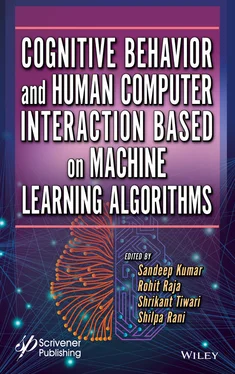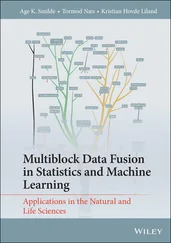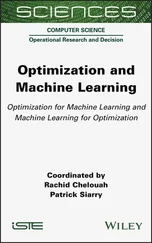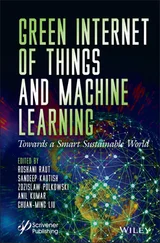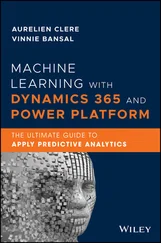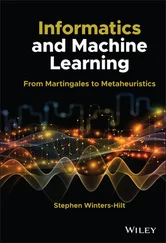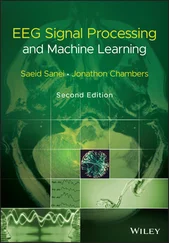5 Chapter 6 Figure 6.1Block diagram of the proposed methodology. Figure 6.2(a) Original image. (b) Face detection from the right angle using Vio... Figure 6.33D wireframe concerning central cell 14. Figure 6.4(a) 3 x 3 x 3 size of voxels array. (b) Smallest possible three-dimen... Figure 6.5Comparative analysis of proposed algorithm with existing technique on... Figure 6.6Comparative analysis of error maps for 3D detailed reconstruction. Th... Figure 6.7Reconstruction result of USF dataset. The numbers under error image r...
6 Chapter 7 Figure 7.1Hierarchy of biometric traits [2]. Figure 7.2Block diagram of the proposed methodology. Figure 7.3Proposed framework for expert one. Figure 7.4Proposed framework for expert two.
7 Chapter 8 Figure 8.1Machine learning framework. Figure 8.2Comparison of machine learning structure with classifiers using accur...
8 Chapter 9 Figure 9.1Predictive analytics process. Figure 9.2Decision tree. Figure 9.3Regression model. Figure 9.4Artificial Neural Network. Figure 9.5Bayesian statistics. Figure 9.6Ensemble classifier. Figure 9.7Gradient boosting. Figure 9.8Support Vector Machine. Figure 9.9Time series analysis. Figure 9.10Regression utilizing k-NN. Figure 9.11Principle component analysis.
9 Chapter 10 Figure 10.1Virtual continuum. Figure 10.2Research strategies followed. Figure 10.3Advancement of publications. Figure 10.4Development of AR and VR advancements in the cycle of hype. Figure 10.5Advancement of games published in STEAM. Figure 10.6On the top is the level of nations which made an exploration on AR o... Figure 10.7Examination of papers picked step by step: Ihe blue line is the rela... Figure 10.8Conveyance of developed fields. Figure 10.9Publications development, everything being equal. Figure 10.10Publications in R&D by nations. Figure 10.11Data about distributions on medical care: The upper left picture is... Figure 10.12Data about educational publications: in the upper left picture is t... Figure 10.13Data about distributions on the industry: The upper left picture is...
10 Chapter 11 Figure 11.1Basic ANN architecture. Figure 11.2Vision-based vehicle navigation system. Figure 11.3The contadino autonomous implement carrier can be used for seeding, ... Figure 11.4Swarm size agriculture robots [60].
11 Chapter 12 Figure 12.1Flowchart of proposed algorithm. Workflow diagram. Figure 12.2(a) Original image (DB1 107_2.tif). (b) Coherence filter. (c) Gabor ... Figure 12.3(a) Original image. (b) Proposed algorithm using a thinning techniqu...
12 Chapter 13 Figure 13.1Diagrammatical view. Figure 13.2(a-d) is Performance evaluation on state of art parameters.
13 Chapter 14 Figure 14.1Five tuples used to evaluate sentiment. Figure 14.2ttree values of sentiment. Figure 14.3Types of sentiments. Figure 14.4Architecture of SA system. Figure 14.5Challenges of sentiment classifier. Figure 14.6Real-life applications of sentiment analysis. Figure 14.7Framework for the proposed model. Figure 14.8Comparison chart of different classifiers for different datasets.
14 Chapter 15 Figure 15.1Shapes of EBN of grade AA, grade A, and grade B. Adapted from [4]. Figure 15.2Block diagram for feature extraction. Figure 15.3Histogram of intensities of saturation layer for various grades. Figure 15.4Original images (top row) and the impurities detected (bottom row) f... Figure 15.5Original image (top row) and HSV colour model (bottom row) of EBNs (... Figure 15.6Original images (top row) and the area detected for each image (bott...
15 Chapter 16 Figure 16.1Proposed approach block diagram. Figure 16.2Similarity among proposed and existing techniques. Figure 16.3Entropy measured using the proposed method. Figure 16.4Time measured using the proposed method. Figure 16.5Investigational datasets. Figure 16.6Comparison of outcome between proposed and existing techniques. Figure 16.7The outcome appears utilizing proposed GUI on picture (h). Figure 16.8Outcome appears utilizing proposed GUI on picture (g). Figure 16.9Outcome appears utilizing proposed GUI on picture (e). Figure 16.10Outcome appears utilizing proposed GUI on picture (f).
1 Chapter 1 Table 1.1The core artifacts provided at the cognitive modeling of user interact... Table 1.2Representational uses of cognitive modeling for decision support user ...
2 Chapter 4 Table 4.1PSNR values for grayscale images (512×512) for different values of AWG... Table 4.2SSIM values for grayscale images (512×512) for different values of AWG...
3 Chapter 6 Table 6.1Study of existing methodology. Table 6.2Sample of possible convex polyhedrons. Table 6.3Comparative analysis of mean and standard deviation of point to point ...
4 Chapter 7 Table 7.1LivDet 2015 dataset details. Table 7.2LivDet 2015 dataset details.
5 Chapter 8 Table 8.1Exhibition correlation of enhanced multilayer perception by different ...
6 Chapter 9 Table 9.1The solid ability sets as controlled by area specialists. Table 9.2The after-effects of the PCA examination. All highlights aside from Z-... Table 9.3The coefficients and noteworthiness estimations of the summed up segme... Table 9.4The models developed from highlights in the critical summed up parts. ...
7 Chapter 10 Table 10.1Search measure synopsis. Table 10.2Evolution of publications houses. Table 10.3Outline of EU and USA publications by topics.
8 Chapter 11 Table 11.1Cameras used in precision agriculture application. Table 11.2Plant and fruit detection techniques. Table 11.3Fruit grading and ripeness detection approaches. Table 11.4Fruit counting and yield prediction. Table 11.5Weed and disease detection.
9 Chapter 12 Table 12.1Texture descriptor results for FVC2004DB1 107_2.tif. Table 12.2Texture descriptor results for FVC2004DB2 101_2.tif. Table 12.3Texture descriptor results for FVC2004DB3 107_7.tif. Table 12.4Texture descriptor results for FVC2004DB4 110_8.tif. Table 12.5Minutiae ratio results for the thinning technique. Table 12.6Minutiae ratio results for mindset technique. Table 12.7Minutiae ratios obtained for the proposed algorithm using the thinnin... Table 12.8Minutiae ratios obtained for the proposed algorithm using the mindset...
Читать дальше
